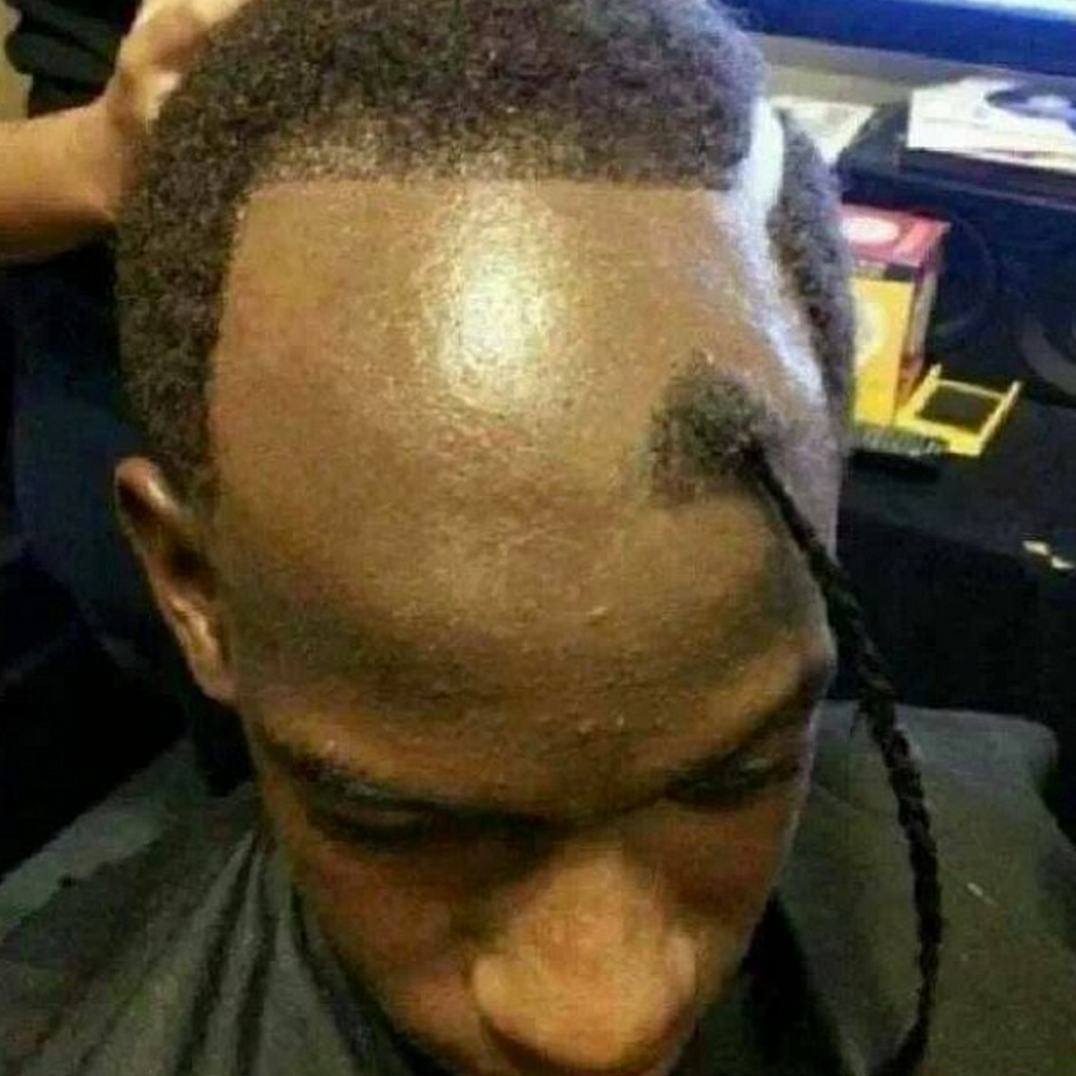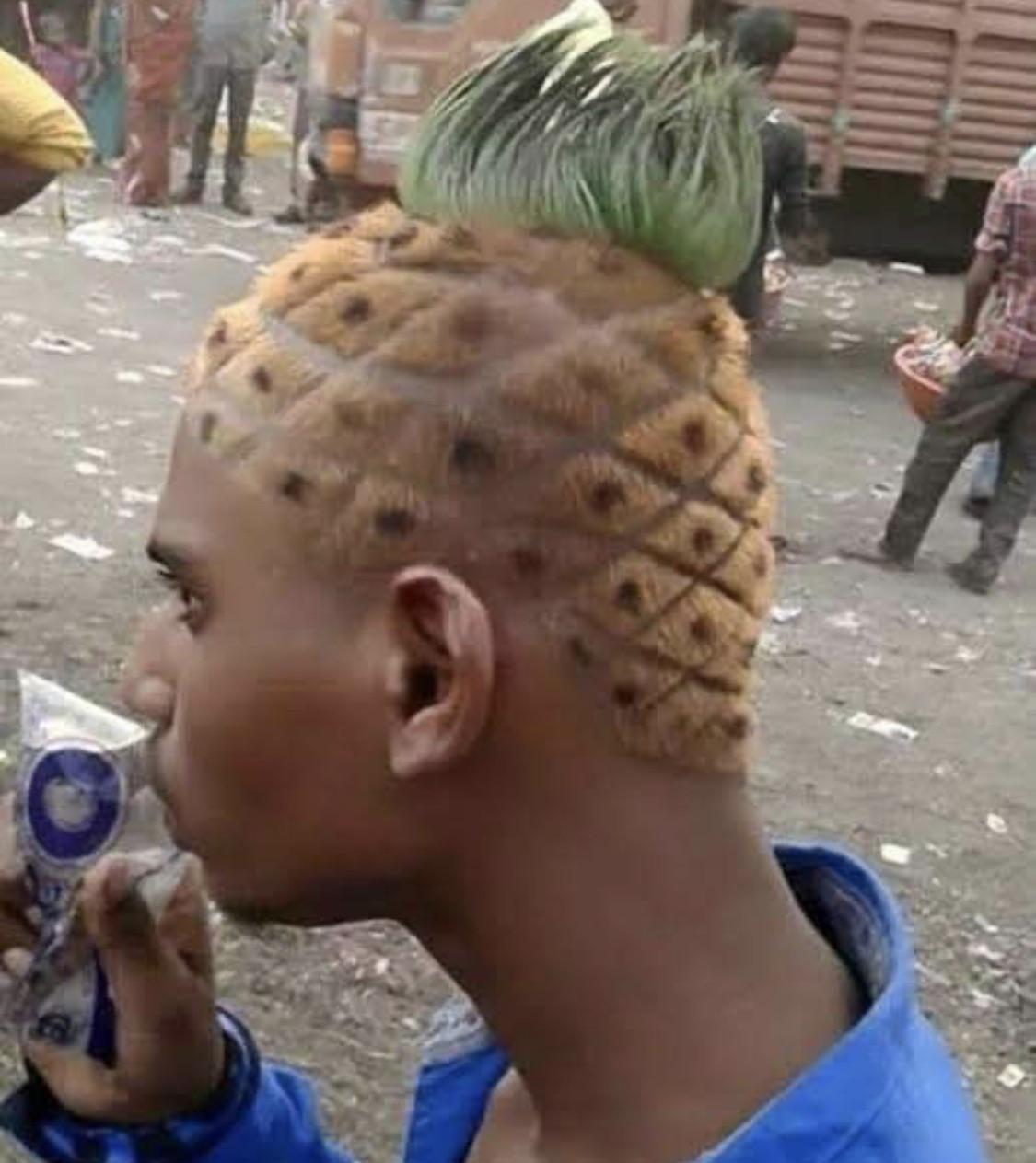There's something truly interesting about how we see hair, isn't there? It’s not just about what’s on our heads; it’s about how it shapes the whole picture of someone. For a long time, people have talked about certain hair looks as being, well, "ugly." Yet, if you stop and think for a moment, that idea of what's good or bad with hair can feel a bit shaky, more like a feeling than a solid truth. What one person might find unappealing, another could see as perfectly fine, or even quite striking, so it really just shows how much our own point of view plays a part in how we judge things.
You see, the way a hairstyle sits on someone's head, the way it frames their face, or even the way it moves, all these things come together to create an impression. And that impression, it turns out, is very much a personal thing, a bit like taste in music or food, where what one person loves, another might not care for at all. This means that when we talk about what makes certain looks seem like "ugly hairstyles," we are actually talking about something that changes from person to person, and from one time to another, which is pretty fascinating if you think about it.
This whole conversation about hair and what looks good, or what might be considered "ugly," goes way beyond just the hair itself. It touches on bigger ideas about how we see beauty, how we judge others, and even how we feel about ourselves. It suggests that perhaps the idea of a truly "ugly" hair style isn't some fixed thing out there, but rather a flexible idea that shifts and changes with who's doing the looking, and what they have come to believe about how things should appear, you know, in a way.
Table of Contents
- Is "Ugly" Even a Real Thing for Hairstyles?
- The Ever-Changing Face of Ugly Hairstyles
- How Do Hairstyles Change How We Look?
- Beyond Just Ugly Hairstyles - The Power of a Good Fit
- Why Do We Call Some Hairstyles Ugly?
- Personal Stories of Ugly Hairstyles
- Can a Hairstyle Really Make Someone Look Different?
- Looking at Ugly Hairstyles Through Different Eyes
Is "Ugly" Even a Real Thing for Hairstyles?
You know, it’s funny, when someone says a hairstyle looks "ugly," it makes you wonder if that's even a real, solid idea. Honestly, the way hair looks good on some people and not so good on others is just a common thing, isn't it? It’s not about someone being inherently not good-looking; it’s about whether a particular hair choice truly suits their face and their overall vibe. A hair style that truly works with your facial features and personal style can make a huge difference, so it's almost as if the hair itself isn't the problem, but how it fits with the person wearing it, which is something to think about, really.
The idea of "ugly" is, very truly, in the eyes of the person doing the seeing. What one person finds to be a bit of an eyesore, another might not even notice, or they might even find it quite charming. It’s like how many people might think they are not good-looking in an objective way, perhaps giving themselves a low score, when someone else might see them as a seven out of ten or even higher. And even that rating, you know, is completely personal and can shift depending on who is looking, which just goes to show how much our own feelings and ideas color what we see, basically.
This brings up an interesting question, doesn't it? If a face were truly considered not good-looking, shouldn't it just stay that way, no matter what? But that's not how things work, is it? We often see people who might be considered average or even a little below average in how they appear, but then they put on some makeup or get a new hair style, and suddenly, they look quite a bit better than average. This just shows how much of an impact these choices can have, proving that what we call "ugly" is not a fixed state, but something that can shift and change with a few thoughtful adjustments, in a way.
The Ever-Changing Face of Ugly Hairstyles
There was a time, you know, when a certain kind of look, something that felt very "futuristic," was often thought of as not good-looking. It’s hard to say why that particular idea caught on, but it really shows how trends and what's popular can shape what we decide is "ugly" in terms of hairstyles. What seems strange or even a bit off today could be all the rage tomorrow, or it could have been perfectly normal a few decades ago, which is pretty wild to consider, honestly.
Thinking back to when I was growing up, in the eighties and nineties, we had some truly wild hair choices and clothes back then. I mean, some of the things people wore on their heads were just out there, almost like works of art, or maybe even a bit of a joke, depending on how you looked at them. Yet, at the time, those were the styles, and people wore them with confidence, you know? It really makes you think about how much time changes our perspective on what looks good and what doesn't, especially with these "ugly hairstyles" that somehow come and go.
It’s kind of a relief, in some respects, that not every young person today has, say, a hole in their hair or some other extreme look that was popular in other times. Every generation seems to find its own way of expressing itself through hair, and what was once a common sight can become something people look back on and wonder, "What were we thinking?" It just goes to show that what we label as "ugly hairstyles" is often just a sign of the times, a reflection of what was happening in fashion and culture at that moment, basically.
How Do Hairstyles Change How We Look?
It's pretty amazing, isn't it, how a simple change to your hair can completely shift how you appear to others, and even how you feel about yourself? It’s not just about covering up what you might not like; it’s about bringing out your best features, making your face look a certain way, or even changing the whole mood of your look. A new hair style can make you seem more serious, more playful, or even more approachable, all without changing anything else about you, which is quite a bit of influence for something as simple as hair, really.
I’ve seen this happen so many times with other people, where they might seem average or even a little less than average in how they appear, but then they get some makeup on or a new hair style, and suddenly, they look quite a bit better than average. It's like magic, almost, how these choices can bring out a different side of someone, making them seem more striking or put together. This just proves that what we see as someone's look is very much influenced by the choices they make with their hair and other personal touches, you know, in a way.
This idea that a hairstyle can change how someone looks is a big reason why the concept of "ugly" is so fluid. If a haircut can take someone who might seem plain and make them look rather attractive, then the "ugly" wasn't really about them, was it? It was about the hair not doing its job, not working with their face. It’s a good reminder that beauty isn't a fixed thing, but something that can be shaped and expressed through personal style, including how we choose to wear our hair, which is quite a liberating thought, actually.
Beyond Just Ugly Hairstyles - The Power of a Good Fit
When we talk about hair, it’s not just about avoiding what people might call "ugly hairstyles"; it’s about finding what truly fits. Think about how some hair styles can make a face seem softer, or how others might make it look sharper. It’s all about balance and how the lines of the hair play with the lines of the face. A style that complements your natural features can truly make you shine, even if it’s a look that might not work for everyone else, and that’s a pretty important thing to remember, really.
Consider, for example, how some characters in stories, like Hinata, have hair that looks better because it's rounder and not as sharp in its appearance as, say, Haku's hair. Even Howl's blonde hair, at a certain point, looked particularly good when it was freshly cut because of its shape. It’s not that Haku is not good-looking; it’s that the shape of his hair might not work as well with his features as a softer, rounder shape might. This shows that the shape and flow of hair can truly affect how we see someone's face, making certain "ugly hairstyles" appear less so when adapted.
This whole thing about hair shapes and facial features really makes you think about how attraction isn't about some very specific face type that falls within precise measurements. It’s much more about the overall feel, the harmony between the hair and the face. A good hair style can make a face seem more open, more friendly, or more striking, simply by altering the frame around it. So, what might be considered an "ugly hairstyle" on one person could be absolutely perfect for another, just because of how it interacts with their unique features, you know, in a way.
Why Do We Call Some Hairstyles Ugly?
It's interesting to consider why we, as a society, label some hair styles as "ugly hairstyles." Is it because they go against what's currently popular? Is it because they don't fit our usual ideas of what looks neat or put together? Often, it seems to come down to what we're used to seeing and what we've been told is good. If something breaks those unwritten rules, then it might get that "ugly" tag, even if it's perfectly fine, or even quite creative, for someone else, which is a bit of a narrow view, really.
Sometimes, the reason we call a hair style "ugly" has more to do with our own feelings or experiences than with the hair itself. Maybe it reminds us of a time or a person we didn't like, or maybe it just doesn't fit our personal sense of what looks nice. It’s a bit like how a certain smell can bring back a memory; a hair style can trigger a feeling, and if that feeling isn't a good one, then the hair might get labeled as "ugly," which is pretty subjective, actually.
There's also the influence of what everyone else thinks. If a lot of people are saying a certain hair style is not good, then it’s easy to just go along with that idea, even if you don't really feel it yourself. This kind of group thinking can really shape what gets called "ugly hairstyles," even when, if you were to look at it on its own, without any outside influence, you might not see anything wrong with it at all. It's almost as if we sometimes borrow our opinions from others, you know, rather than forming our own, which is a common human trait, basically.
Personal Stories of Ugly Hairstyles
I can tell you, I have had, and still do have, some hair styles that many people would probably call "ugly." But the funny thing is, I actually don’t see them as not good-looking until someone, usually a family member, says


